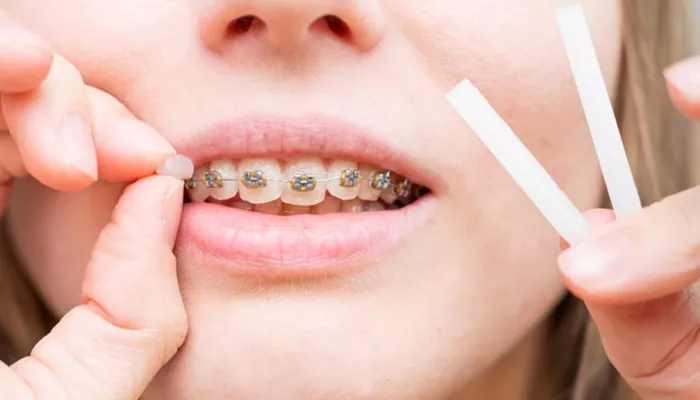Orthodontic treatment can significantly improve your smile and oral health, but it often comes with its set of challenges.
One common issue many patients face is discomfort caused by braces or other orthodontic appliances. Traditionally, orthodontic wax has been the go-to solution for alleviating this discomfort. However, there are several alternative methods and products that can also help manage the irritation and enhance your orthodontic experience. In this article, we’ll explore these alternatives in detail, helping you find the best solution for your needs.
The Role of Orthodontic Wax
Before diving into alternatives, it’s important to understand why orthodontic wax is used. Orthodontic wax is a soft, pliable substance applied to the brackets and wires of braces to create a barrier between the metal components and the sensitive tissues in your mouth. This barrier helps to prevent irritation, sores, and discomfort caused by friction. While effective, orthodontic wax isn’t the only option available.
What To Use Instead Of Orthodontic Wax
1. Silicone-Based Products
Silicone Gel Pads
Silicone gel pads are a popular alternative to orthodontic wax. These pads are designed to cushion the areas where braces and other appliances come into contact with the oral tissues. Unlike wax, silicone pads are often reusable and provide a more durable solution.
SEE ALSO: Are Your Teeth Sensitive After Getting Braces Off?
Benefits:
Durability: Silicone gel pads tend to last longer than wax and can be reused multiple times.
Comfort: They offer a soft, cushioned feel that can be more comfortable than wax.
Ease of Use: Silicone pads are easy to apply and remove, and they typically adhere well to braces.
How to Use:
Clean the area around your braces thoroughly.
Apply the silicone pad directly to the bracket or wire causing discomfort.
Press gently to ensure it sticks securely.
Cleaning and Maintenance:
Silicone pads should be cleaned regularly with mild soap and water to maintain hygiene and prevent the buildup of bacteria.
Silicone Orthodontic Covers
Silicone orthodontic covers are another option. These covers fit over the brackets and wires, providing a protective layer.
Benefits:
Protection: They offer complete coverage, reducing irritation from all sides.
Flexibility: Silicone covers can be trimmed to fit your specific orthodontic appliances.
How to Use:
Trim the cover to fit over your brackets and wires.
Place the cover over the appliances, ensuring a snug fit.
Cleaning and Maintenance:
Wash the covers with soap and water after each meal to keep them clean.
2. Orthodontic Gels and Ointments
Oral Pain Relief Gels
Oral pain relief gels, such as those containing benzocaine or other numbing agents, can provide temporary relief from discomfort caused by braces.
Benefits:
Immediate Relief: These gels can quickly numb the affected area, offering fast relief from pain.
Convenience: They can be applied directly to the sore spots.
How to Use:
Apply a small amount of gel to the affected area with a clean finger or cotton swab.
Avoid eating or drinking for a few minutes to allow the gel to take effect.
Considerations:
Use these gels sparingly and according to the instructions to avoid potential side effects.
They provide temporary relief and should not be considered a long-term solution.
Topical Anti-Irritation Ointments
Some topical ointments designed for general oral irritation can also be effective. These ointments usually contain soothing ingredients like aloe vera or vitamin E.
Benefits:
Soothing Effect: Ingredients like aloe vera help to reduce inflammation and promote healing.
Versatility: These ointments can be used for various types of oral irritation, not just from braces.
How to Use:
Apply the ointment to the affected area after cleaning your mouth.
Follow the product’s instructions for frequency of use.
Considerations:
Ensure that the ointment is safe for oral use and does not contain any harmful ingredients.
3. Oral Hygiene Practices
Saltwater Rinses
Saltwater rinses are a time-honored remedy for soothing oral irritation. The saline solution helps to reduce inflammation and promote healing.
Benefits:
Natural: Saltwater is a natural and cost-effective remedy.
Healing: It can help to speed up the healing process of sores and irritations.
How to Use:
Mix 1 teaspoon of salt in 8 ounces of warm water.
Rinse your mouth with the solution several times a day, especially after meals.
Considerations:
Overuse of saltwater rinses can lead to dryness, so use in moderation.
Antiseptic Mouthwashes
Antiseptic mouthwashes, such as those containing chlorhexidine, can help reduce the risk of infection and soothe irritation.
Benefits:
Antimicrobial: They help to kill bacteria and reduce the risk of infections.
Soothing: Many antiseptic mouthwashes have ingredients that provide a soothing effect.
4. Orthodontic-Specific Products
Orthodontic Relief Wax
While traditional orthodontic wax is commonly used, there are specialty products available that offer enhanced comfort.
These include orthodontic relief waxes designed with added features, such as longer-lasting formulas or added soothing agents.
Benefits:
Enhanced Comfort: Some specialty waxes offer added comfort and longer wear.
Targeted Solutions: These products may include additional soothing ingredients for better relief.
How to Use:
Follow the same application method as standard orthodontic wax.
Ensure that the wax covers all the areas causing discomfort.
Custom-Fit Mouth Guards
Custom-fit mouth guards can be made to cover braces and protect your oral tissues. They are typically made by dental professionals and tailored to fit your specific needs.
Benefits:
Custom Fit: They provide a precise fit and optimal protection.
Comfort: Custom-fit guards are generally more comfortable and effective than generic options.
How to Use:
Have your dentist or orthodontist create a custom mouth guard.
Wear the guard as recommended, especially during activities that may cause irritation.
Conclusion
While orthodontic wax has been a traditional solution for managing discomfort caused by braces, there are numerous alternatives available that can offer additional comfort and convenience. From silicone-based products and orthodontic gels to lifestyle adjustments and custom-fit mouth guards, exploring these options can help you find the best solution for your needs. Each alternative has its unique benefits and considerations, so it’s essential to choose the one that best fits your personal preferences and orthodontic requirements.

